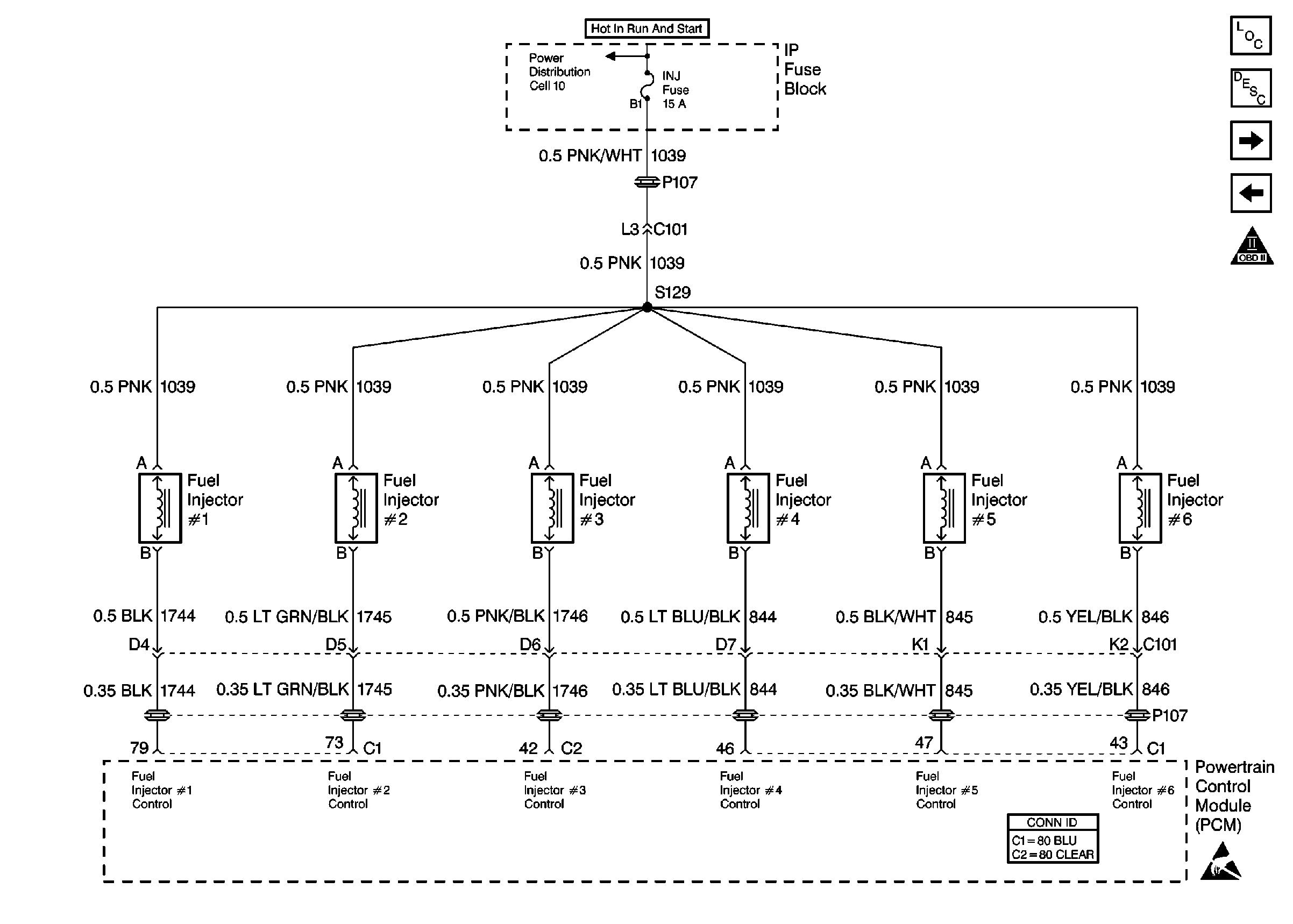Checks
| Actions
|
DEFINITION:
Fuel ignites in the intake manifold, or in the exhaust system, making loud
popping noise.
|
Preliminary Checks
|
| • | Refer to Important Preliminary Checks . |
| • | Refer to Visual/Physical Checks . |
|
Sensor/System
|
| • | Check for the following intermittent ignition system conditions: |
| - | Intermittent CKP Sync or CKP 18X Signal. |
| - | Intermittent ignition feed circuit or sensor ground circuit to
the crankshaft position sensor or the camshaft position sensor. |
| - | Intermittent 3X reference signal. |
| - | Intermittent camshaft position signal |
| • | Check the throttle body inlet screen for foreign objects or damage
that can affect the MAF sensor airflow sample. |
|
Fuel System
|
|
Ignition System
|
| • | Check for proper ignition voltage output using the following steps: |
| - | Clip the J 26792
spark
tester to engine ground. |
| - | Connect one end of a spark plug wire to the spark tester; leave
the other end of the spark plug wire to the coil being tested. |
| - | Connect one end of another spark plug wire to the other coil tower;
connect the other end of the spark plug wire to ground. |
| - | Crank the engine while observing the spark tester; a spark should
be observed. |
| - | Repeat the above steps for each coil. |
| • | If spark is not present at the coil(s), check for the following
conditions: |
| | Important: If carbon tracking is detected on a component, replace that component
and it's mate.
|
| - | Coil(s) - Cracks, carbon tracking/arcing, or a secondary resistance
value outside the specified range. |
Coil Secondary Resistance
5000 - 8000 ohms (5K - 8K ohms) | - | Spark Plug wires - Signs of arcing/cross firing, cracks, carbon
tracking, plug boot damage, pinched, incorrect routing, or a resistance value
greater than the specified value. |
VIN 1 Spark Plug Wires Resistance
1000 to 1500 ohms/per ft.
| | Important: Spraying the secondary ignition wires with a light mist of water may
help locate an intermittent problem. Ignition components will arc to ground
when a secondary component is malfunctioning.
|
| - | Malfunctioning ignition control module. |
| - | Ignition System Wiring - Loose ignition module feed or ground
connection, or damaged system wiring. |
| • | Remove spark plugs and check for the following conditions: |
| | Important: If carbon tracking is detected on a component, replace that component
and it's mate.
|
| - | Check the spark plugs for carbon tracking on the porcelain and pitting
on the plug wire contact. |
| - | Burned or damaged electrodes |
| • | If spark plugs are gas or oil fouled, the cause of the fouling
must be determined before replacing the spark plugs. |
|
Engine Mechanical
| Check engine mechanical:
| • | Sticking or leaking valves. |
| • | Excessive oil in combustion chamber-Leaking valve seals. |
| • | Low cylinder compression. |
| • | For incorrect basic engine parts. Inspect the following: |
| • | Refer to Engine Mechanical for diagnosis procedures. |
|
Additional Checks
|
| • | Check Intake and exhaust manifold(s) for casting flash. Refer
to Engine Mechanical . |
| • | Check TCC operation. Refer to 4T65-E Automatic Transaxle Diagnosis
. |
| • | Check the exhaust system for a possible restriction. |
| - | Inspect exhaust system for damaged or collapsed pipes. |
| - | Inspect mufflers for heat distress or possible internal failure. |
|

